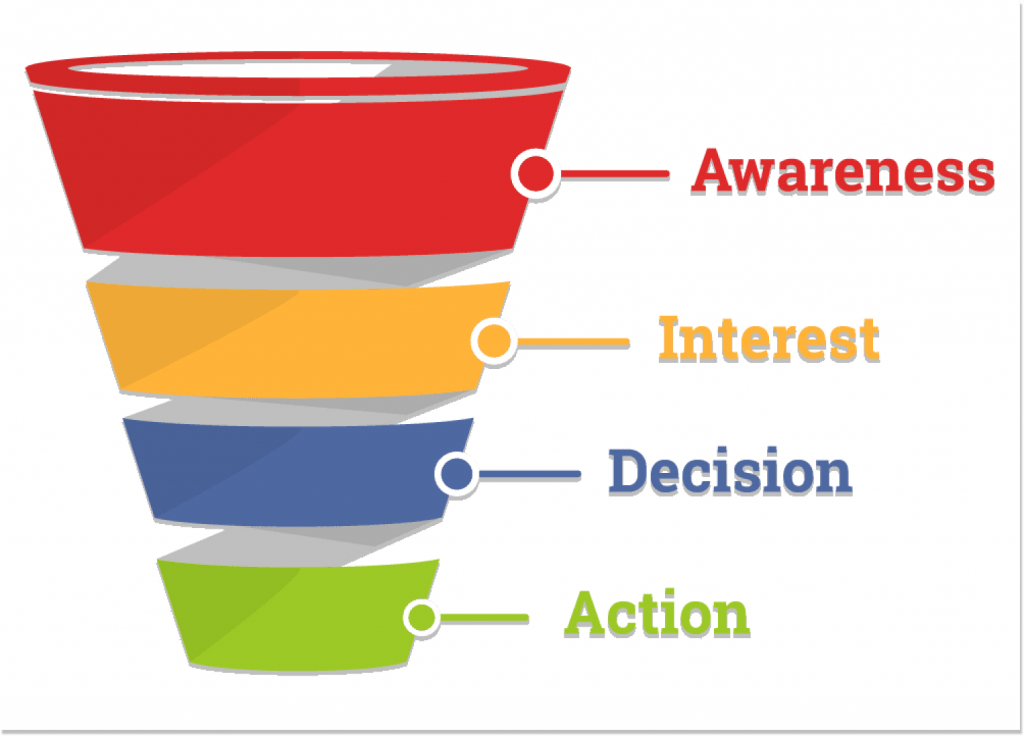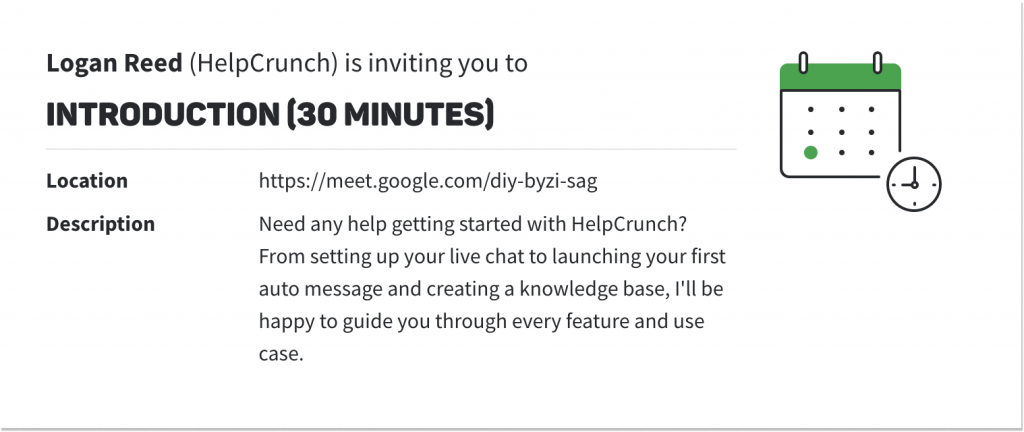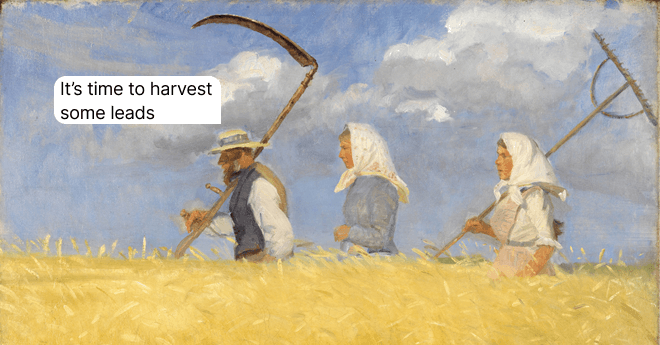How to Effectively Engage Leads on Every Stage of the Funnel (and the Tools You Need for This)
To make sure you educate and engage your leads the right way, read over this in-depth article. How to pique clients' interest and when is the time to take action? It's all here.
Written by Brad Smith
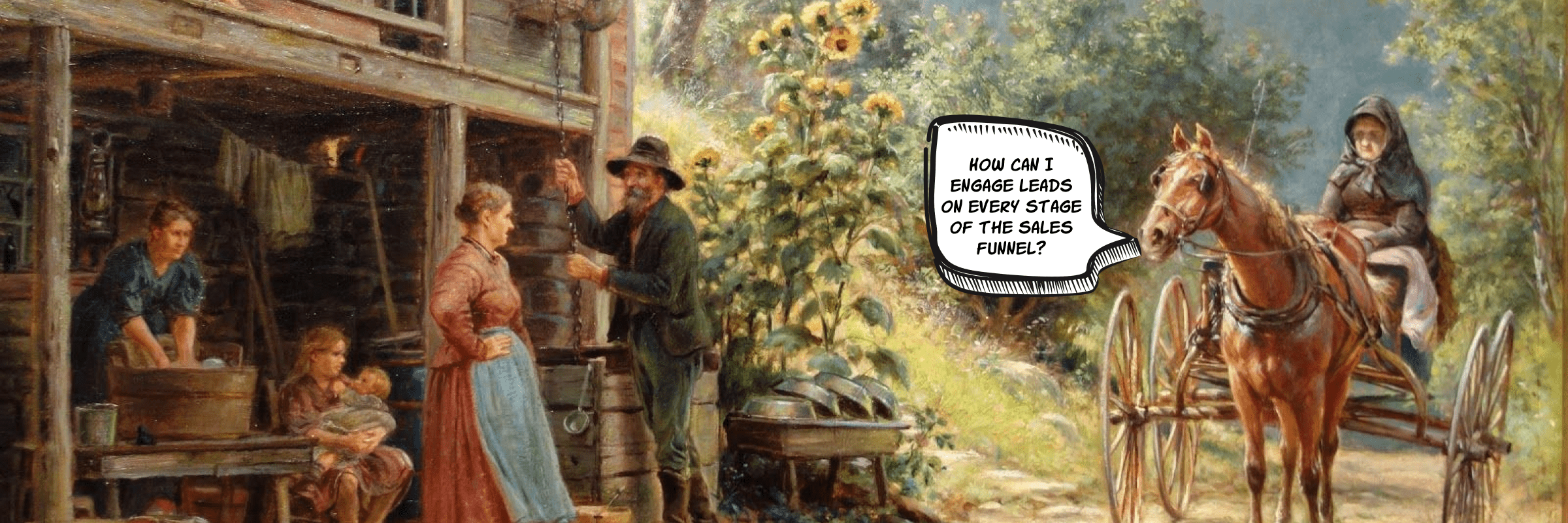
Imagine if every visitor on your website makes a purchase. Someone learns about your offer and they decide to reach out directly to the sales team. How awesome would that be?
Of course, things aren’t that straightforward. Certain types of products naturally have longer sales cycles. It can take weeks or even months from when someone first hears about a brand to when they decide to buy.
Customers today are savvier than ever. They consume multiple pieces of content across the sales cycle to inform their purchasing decision.
Put simply, it means that you need to engage leads at every stage of the sales funnel. This will allow you to nurture leads across the entire purchase journey.
In this article, we show how to effectively engage leads throughout the sales funnel and the tools needed.
What is a sales funnel?
A sales funnel is a visualization of the stages that a prospect goes through leading up to their purchase. A deep understanding of each stage allows you to refine your marketing strategy and increase customer engagement.
Here’s an example of what a sales funnel looks like:
This may look a little confusing at first, but understanding a sales funnel will help you produce content for your brand — the kind that builds credibility and moves leads toward a purchasing decision.
Most businesses use this model to engage with users at every stage of the sales funnel. In short, the user journey starts at the Awareness stage. Then comes the Interest stage followed by Decision and Action stage.
Read on to understand the various stages of the sales funnel.
Top of the funnel
The top of the funnel is where it’s widest. Prospects are just learning about your products or services for the first time. They might land on your site through ads on social media networks, like Facebook and Instagram, or a Google search.
Potential buyers aren’t yet ready to make a purchase at this point. They’re still looking for a solution, so your job is to educate and inform.
Middle of the funnel
The middle of the funnel indicates that prospects are engaging with your brand. Examples include signing up for your newsletter or reading through your blog posts.
Prospective customers are closer to making a purchase at this stage, but they are still evaluating their options. Your main goal here is to develop further relationships with them.
Bottom of the funnel
The bottom of the funnel is where your most qualified prospects are. This is ultimately where you want leads to be, as they have shown the most interest.
Prospects are ready to purchase at the given stage, but they might be considering other options on the market. This is your opportunity to pull out all the stops and demonstrate the value of your offers.
Now let’s look at how you can engage leads at each stage (and the tools you need).
Awareness stage
The awareness stage is when a prospect first learns about your brand. They may land on your website through an ad, a Google search, a post on social media, etc.
The main goal here is to simply raise awareness and collect leads. The best way to engage leads in this stage is to educate your audience.
Here are different types of content you can publish to build awareness for your brand.
- Blog posts allow you to showcase content that answers prospects’ questions at the awareness stage (e.g., “What is ____?”, “How does ____ work?”). More than 50% of shoppers use Google to discover or find a new brand. Each post you publish gives you an opportunity to capture search engine traffic.
- Social media posts on Facebook or Twitter are another way you can attract leads. By sharing content about your business, you can increase brand awareness and establish authority.
- Infographics include visuals to communicate information on a topic in a concise and engaging manner. These typically compile data and facts from industry research.
For the awareness stage, consider such tools as proactive live chat to engage with prospects. For example, if a visitor lands on a blog post or your homepage, you can reach out directly to them and offer help.
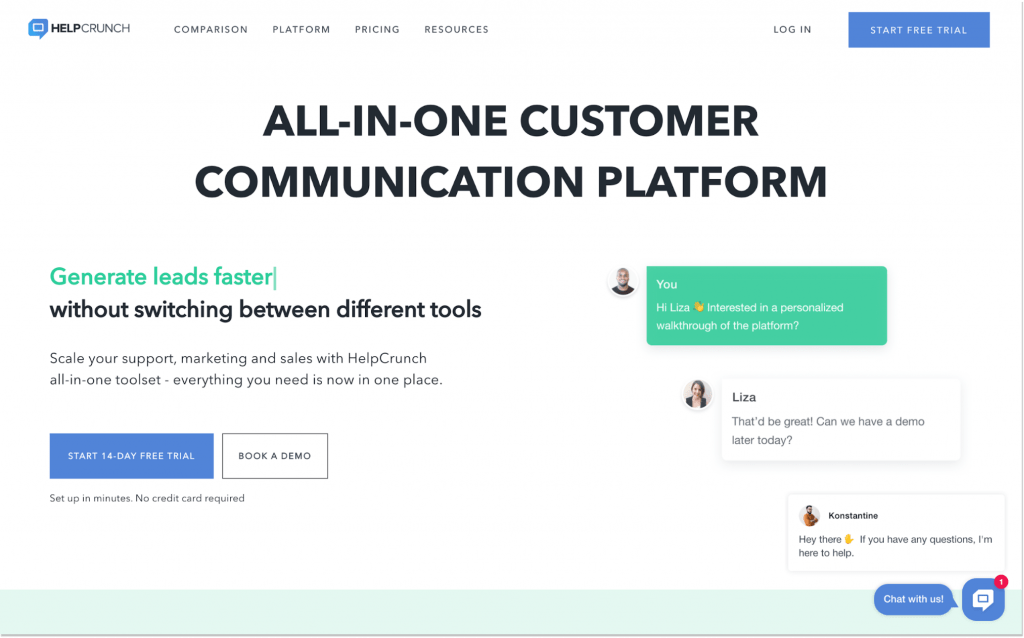
Another engagement option here is adding triggered popups to specific blog posts that invite visitors to download an eBook for free.
The awareness stage’s goal is to provide answers and helpful content to the audience. Consider adopting a language tool like Grammarly to double-check your content for grammatical errors before you publish.
Note! Don’t be overly aggressive. The last thing you want is to push prospects away. Always focus on providing value instead.
Interest stage
The next stage of the sales funnel is the interest stage. Prospective clients are aware of your products or services and engaging with the brand. They’ve read a few blog posts, followed you on social media, or even subscribed to your newsletter.
This is the time when prospects just research, with no intention to buy. Your aim is to build relationships with new leads. Publish content that establishes your expertise and offer any help possible. The options are miscellaneous:
- Videos work especially well for the interest stage. 84% of people say they’ve been convinced to make a purchase after watching a brand’s video. Create videos that demonstrate how your products or services work, and how they solve a common pain point.
Take a look at an excellent explainer video from Dollar Shave Club:
Once someone subscribes to your list, provide value and demonstrate that you understand their needs with targeted email marketing campaigns. Consider creating a drip email campaign — a sequence of letters that you send to subscribers over a period of time.
- Webinars are video presentations that cover a topic. You can also use this content to pique leads’ interest. For example, invite prospects to sign up for a webinar that showcases how your products or services work.
Decision stage
This is when a prospect’s problem is defined. A lead is almost ready to convert, but they still need more information to come to a purchasing decision.
Customers are doing research on different solutions, including yours. They’re trying to determine whether your offer is the right choice.
Content to create for the decision stage can be varied:
- Product comparisons are a great way to help prospects make up their mind. These can be blog posts, landing pages, and even videos that show how your products or services stack up against the competition.
- Case studies are detailed stories of how your products or services have helped customers achieve a certain outcome and success. Using them can be an excellent way to show the value of your products or services.
Here’s an example of a case study that HubSpot features:
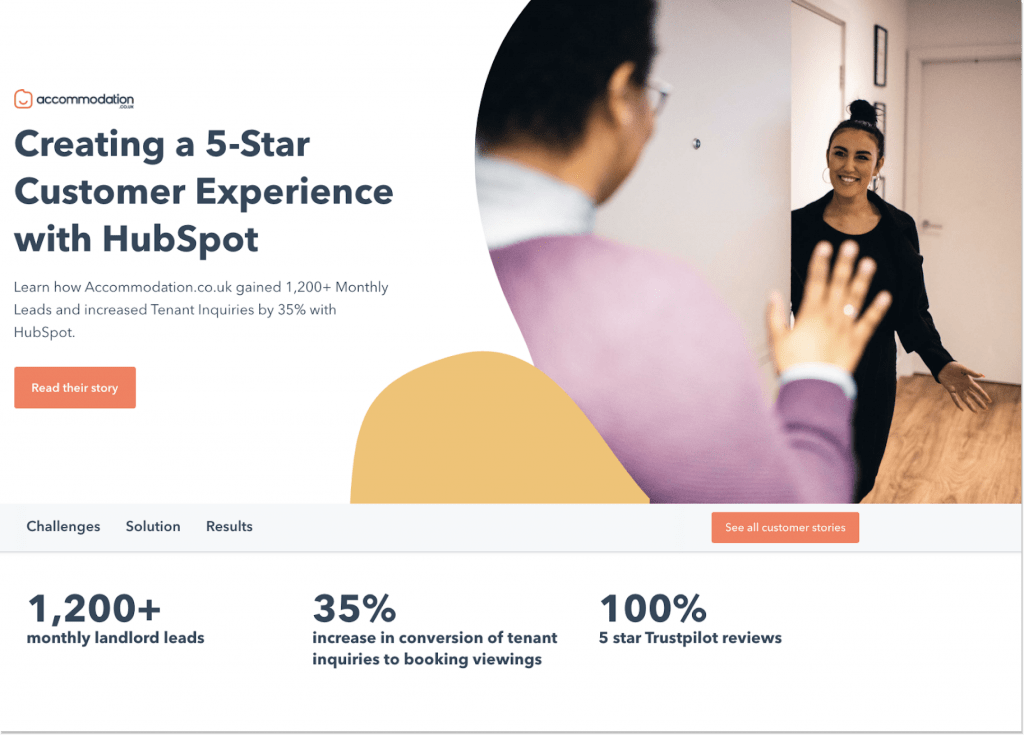
- Free trials give you the opportunity to try whatever you offer with no strings attached. Prospects are much closer to making a purchase. They might still have reservations, though. If you haven’t already, now is a great time to offer a free trial. You can also offer a consultation or schedule demos with a tool like Pipedrive.
One of the main goals at this stage is to identify objections that leads are having and find ways to help overcome them. Price is a fairly common objection that many consumers have. So, to help prospects with a decision, you could offer limited-time discounts.
Action stage
The action stage is when a lead has finally acted and they are now a paying customer. But your job isn’t done yet. You need to spend time nurturing those relationships to show customers that they made the right choice.
You might want to look into some of the following content types to reach people in the action stage.
- A knowledge base is an online library of information that customers can access 24/7 if they need any help. Offering one is essential, as it allows your customers to find solutions on their own.
- Automated email campaigns can also be used to onboard new users. As soon as a user signs up, you can send an immediate email that welcomes them and links to helpful resources.
- Training materials like guides and videos can show new customers how to use your products or services. Be sure to include links to these resources in a welcome email.
Nurturing relationships with new customers is absolutely key. If you leave clients to figure things out on their own, they won’t feel valued.
There are customer engagement platforms like HelpCrunch for onboarding automation and delivering personalized messages to customers. Use them to run an automated campaign series that guides customers on how to get started.
The sooner new users extract value from your products or services, the less likely they’ll churn. Be sure to also have a clear training program in place and regularly check in with newcomers.
Conclusion
The sales funnel is a helpful marketing tool that can help you close more deals. Understanding each stage allows you to effectively engage leads and move them down the funnel.
Of course, you’ll need the right tools to manage your efforts. Consider using a customer communication platform like HelpCrunch to nurture and engage your leads at every stage of the sales funnel. You can get started today with a free 14-day trial.

